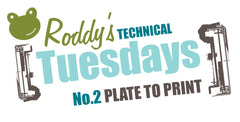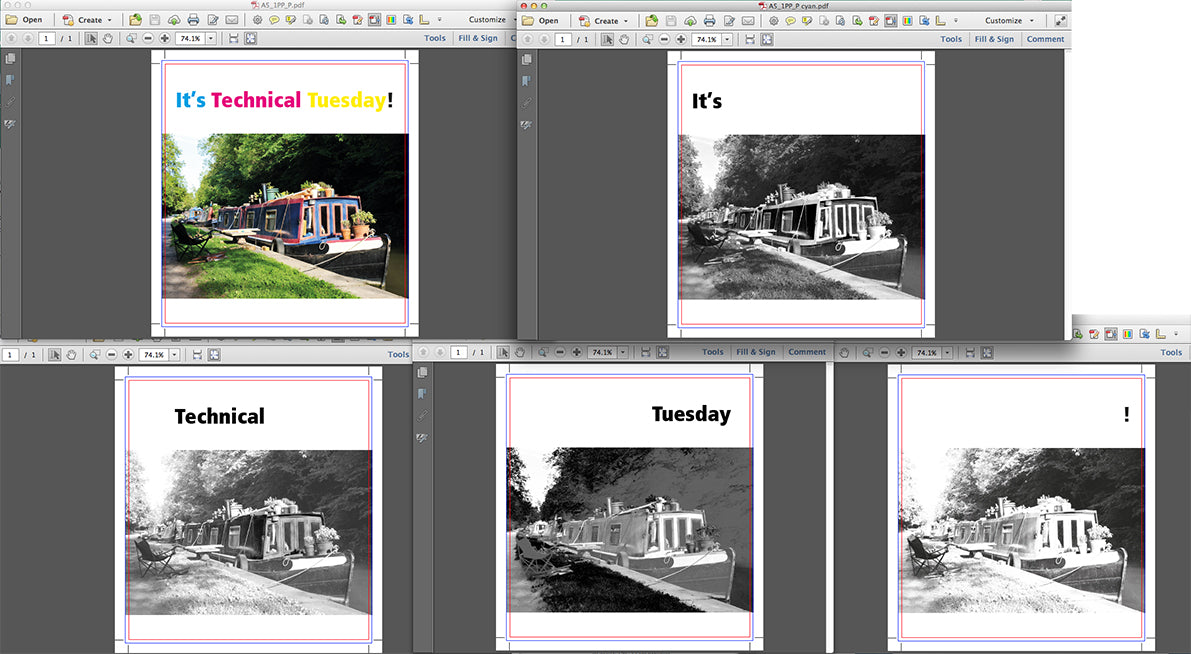Technical Tuesday No. 2: From Plate to Print

Following on from 'Why CMYK?', here's how your artwork continues it's journey from plate to print!
Our RIP (Raster Image Processor) splits your artwork into its component colour parts Cyan, Magenta, Yellow and Black (CMYK), the 4 inks used by offset litho presses.
The images below show how the full colour example is split into the four component images ready to be transferred to printing plates.
We need 4 plates to produce single sided leaflets and 8 plates to produce double sided leaflets.

How are printing plates produced?
We use Kodak Sonora XP process free plates. They component images are created using our Kodak Magnus Q400 platesetters. These use a laser to create an image on each of the 4 aluminium plates, (one each for Cyan, Magenta, Yellow and Black) by using heat to create microscopic pits in the plate which the ink can adhere to.
Prior to this, plates would have been produced using photographic film and chemicals to expose a light sensitive coated plate, in a similar way to a traditional camera and film exposure. Our chemical free platesetters are far more environmentally friendly and create less waste.
How do the plates create the printed image?
The plates are attached to the plate cylinders on our litho printing presses. Printing ink is transferred from the printing plates onto rubber blanket cylinders, which in turn transfer the ink to the paper, the four colours being printed on top of one another to create your full colour leaflets.
Can the plates be used again?
No. Once we have completed the print run the plates are taken off the press and sent for recycling so they can be made into new plates, or something completely different!
If you want to see one of our Magnus platesetters in action, there is a short video below (unfortunately you can't see any lasers!)
